The Russell T Davies era of Doctor Who is celebrated for its character-driven narratives and emotional depth. A rewatch of this era reveals the intentionality with which Davies crafted character arcs. While previous seasons explored the Ninth Doctor’s healing and the Tenth Doctor’s early exuberance and subsequent grief, Doctor Who series 4 marks a significant turning point. This season witnesses the Tenth Doctor’s evolution into a more mature, albeit more cynical, incarnation, grappling with the immense weight of the universe.
This maturation is perfectly mirrored and challenged by the introduction of Donna Noble, portrayed brilliantly by Catherine Tate. Donna, unlike many previous companions, isn’t a young woman just discovering adulthood. She is a fully formed, if somewhat lost, adult. Her self-awareness, strong values, and intolerance for foolishness make her arguably the most mature companion of the modern era, creating a dynamic and compelling partnership with the Doctor.
Series 4 exudes a newfound confidence, a testament to the show’s well-oiled machine status at this point in its run. From the premiere to the final specials, the energy remains consistently high. While some may miss the earlier seasons’ scrappier charm, series 4 achieves an unparalleled level of consistency in quality during the Tennant era. This consistency is largely fueled by the phenomenal chemistry between David Tennant and Catherine Tate, making their on-screen partnership truly magical.
This magic is precisely what fuels the anticipation for their reunion in the 60th anniversary specials alongside RTD and Bernard Cribbins as Wilf. Before diving into their future adventures, let’s revisit and rank their original run within Doctor Who series 4:
LOWER TIER
14. “The Next Doctor” (2008 Christmas special)
 Jackson Lake, mistakenly believing he is the Doctor, stands defiantly in Victorian London, facing an unseen threat in Doctor Who's "The Next Doctor".
Jackson Lake, mistakenly believing he is the Doctor, stands defiantly in Victorian London, facing an unseen threat in Doctor Who's "The Next Doctor".
“The Next Doctor,” while featuring a compelling premise, unfortunately loses its way amidst CyberKing chaos. The concept of Jackson Lake, a Victorian gentleman with amnesia believing himself to be the Doctor, holds immense potential for a poignant and memorable episode. However, this intriguing, potentially intimate narrative is overshadowed by the spectacle of the CyberKing. What begins as a promisingly grounded Victorian mystery escalates into an overblown Kaiju battle, diminishing the emotional impact of Jackson Lake’s personal story. Furthermore, the attempt to weave in a villainous plot rooted in Victorian sexism feels underdeveloped and ultimately confusing, contributing to the episode’s overall muddled execution. The wasted potential of Jackson Lake’s character and the story’s tonal inconsistencies place “The Next Doctor” at the bottom of the series 4 ranking.
13. “The Sontaran Stratagem” / “The Poison Sky” (season four, episodes four and five)
Even the less stellar episodes in Doctor Who series 4 remain engaging, a testament to the season’s overall strength. “The Sontaran Stratagem” and “The Poison Sky” mark Martha Jones’ return, usher in UNIT’s modern era, and facilitate the first proper meeting between the Doctor and Wilf. These elements alone almost compensate for a narrative that feels stretched thin across two episodes. As is common in the RTD era, the contemporary Earth setting lacks significant depth and originality in its writing, and the inclusion of a stereotypical “American” character is questionable. Despite these shortcomings, this anti-war narrative, while somewhat underdeveloped, is more underwhelming than truly flawed. The introduction of the Sontarans into NuWho and the character moments keep these episodes watchable, even if they don’t reach the heights of the season’s best.
SOLID TIER
12. “Partners in Crime” (season four, episode one)
 Donna Noble and the Doctor, in a comedic and unexpected reunion, mimic each other's actions through glass in Doctor Who's "Partners in Crime".
Donna Noble and the Doctor, in a comedic and unexpected reunion, mimic each other's actions through glass in Doctor Who's "Partners in Crime".
“Partners in Crime” offers a refreshing season premiere by bringing back a former guest star, Donna Noble, as a full-time companion. This decision injects a unique energy into the episode, distinguishing it from previous NuWho season openers. While the Adipose storyline itself is arguably weak, the episode thrives on its character-driven moments. The iconic pantomime scene alone solidifies the episode’s comedic strength, culminating in the unforgettable “want a mate/want to mate” exchange. Beyond the humor, “Partners in Crime” delves into more meaningful territory: the Doctor acknowledging his past missteps with Martha, the heartwarming connection between Donna and Wilf, the underlying melancholy beneath Donna’s comedic persona, and the genuinely surprising cameo by Rose. It speaks volumes about the strength of series 4 that “Partners in Crime,” considered one of its weaker episodes, still manages to launch the season with such impact and entertainment.
11. “The Doctor’s Daughter” (season four, episode six)
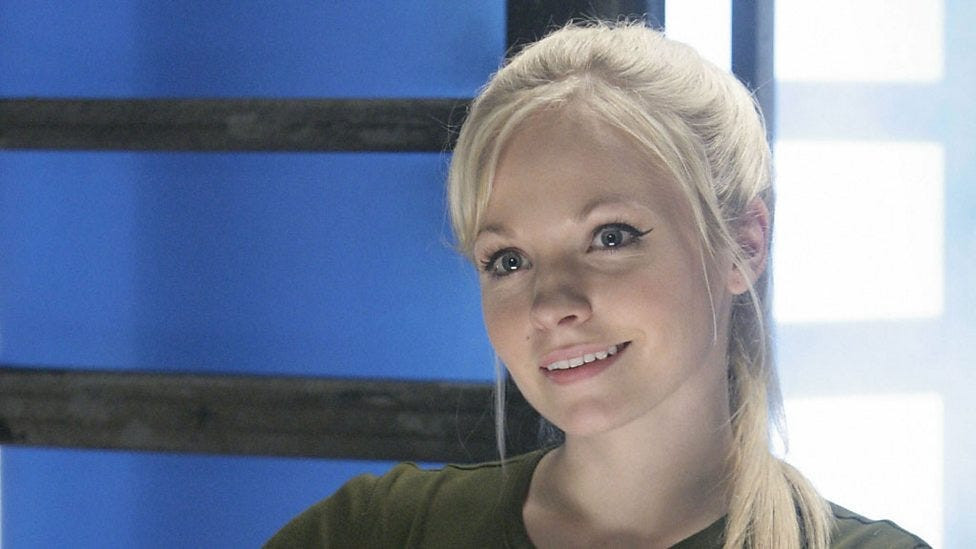 Jenny, the Doctor's Daughter, a genetically engineered warrior, stands ready for battle on a war-torn planet in Doctor Who's "The Doctor's Daughter".
Jenny, the Doctor's Daughter, a genetically engineered warrior, stands ready for battle on a war-torn planet in Doctor Who's "The Doctor's Daughter".
“The Doctor’s Daughter” holds a special place in Doctor Who lore, not just for its narrative but for its real-world impact: it brought David Tennant and Georgia Moffett together, leading to their marriage and, subsequently, Georgia Tennant’s scene-stealing performances in Staged. This episode is a significant piece of British television history for that reason alone. As an episode itself, “The Doctor’s Daughter” is reliably solid. Its thematic explorations are somewhat heavy-handed, and its militarized dystopian world-building leans towards the exaggerated, but this is, after all, Doctor Who. Martha Jones arguably receives better character development in this guest appearance than she did as a full-time companion. The episode’s interrogation of the Doctor’s inherent conflict between being a soldier and a peacemaker is genuinely interesting. However, the fluctuating tone prevents “The Doctor’s Daughter” from achieving true top-tier status within series 4.
10. “Planet of the Dead” (2009 Easter special)
“Planet of the Dead” often finds itself near the bottom of series 4 episode rankings, but it’s an undeniably enjoyable and fun adventure. While admittedly light on substance, its silliness provides a welcome contrast to the increasingly weighty tone of Tennant’s final episodes. The premise of a busload of people stranded on an alien planet, coupled with the introduction of memorable UNIT characters, showcases RTD’s talent for crafting engaging ensembles. Michelle Ryan, as Lady Christina de Souza, injects a fun, vampy energy that, while perhaps not suited for a full-time companion, works perfectly for a one-off special. Similar to “Voyage of the Damned,” “Planet of the Dead” is best enjoyed as a lighthearted holiday romp, offering a refreshing change of pace within the season. The episode’s fast-paced action and charismatic guest characters elevate it above some of the season’s more thematically ambitious but less entertaining entries.
9. “Planet of the Ood” (season four, episode three)
 The Doctor and Donna stand amidst a crowd of Ood, their serene faces contrasting with the industrial setting of Ood-Sphere in Doctor Who's "Planet of the Ood".
The Doctor and Donna stand amidst a crowd of Ood, their serene faces contrasting with the industrial setting of Ood-Sphere in Doctor Who's "Planet of the Ood".
While the initial NuWho seasons heavily relied on interpersonal drama, series 4 shifts focus, establishing a strong partnership between the Doctor and Donna and exploring more abstract moral concepts. This shift towards moral quandaries gives series 4 a Star Trek-esque feel, particularly evident in “Planet of the Ood.” This episode directly confronts the uncomfortable “happy slave” trope prevalent in fantasy and science fiction. The Ood’s seemingly willing servitude, briefly touched upon in their season two introduction, becomes the central theme. The Doctor and Donna uncover the disturbing reality behind the Ood’s manufactured loyalty, exposing a critique of modern capitalism’s exploitative aspects. While the critique may be somewhat simplistic, the episode’s true strength lies in Donna’s character development. She evolves from being initially overwhelmed by the Ood’s alien nature to recognizing and empathizing with their inherent humanity, marking a significant step in her companion journey.
8. “The Stolen Earth” / “Journey’s End” (season four, episodes twelve and thirteen)
Ranking RTD’s finale extravaganzas against standard episodes is always challenging, and “The Stolen Earth” / “Journey’s End” exemplifies this difficulty. This two-parter is a mixed bag, containing elements that are both incredibly captivating (“The Stolen Earth”) and frustrating (“Journey’s End”). The reunion of the Doctor’s allies and companions for a massive Dalek confrontation is undeniably thrilling. However, the finale’s climax feels morally ambiguous and surprisingly anticlimactic. The Meta-Crisis Doctor concept, brimming with potential, is rushed and leads to a somewhat confused and overly neat resolution. With more breathing room, perhaps across three episodes instead of two, RTD could have crafted a more nuanced and impactful finale. The sheer number of characters and storylines, including Donna’s heartbreaking departure, leaves individual moments feeling underdeveloped. Despite these shortcomings, the initial Avengers-style team-up in “The Stolen Earth” is undeniably spectacular and elevates the overall ranking.
7. “The Unicorn and the Wasp” (season four, episode seven)
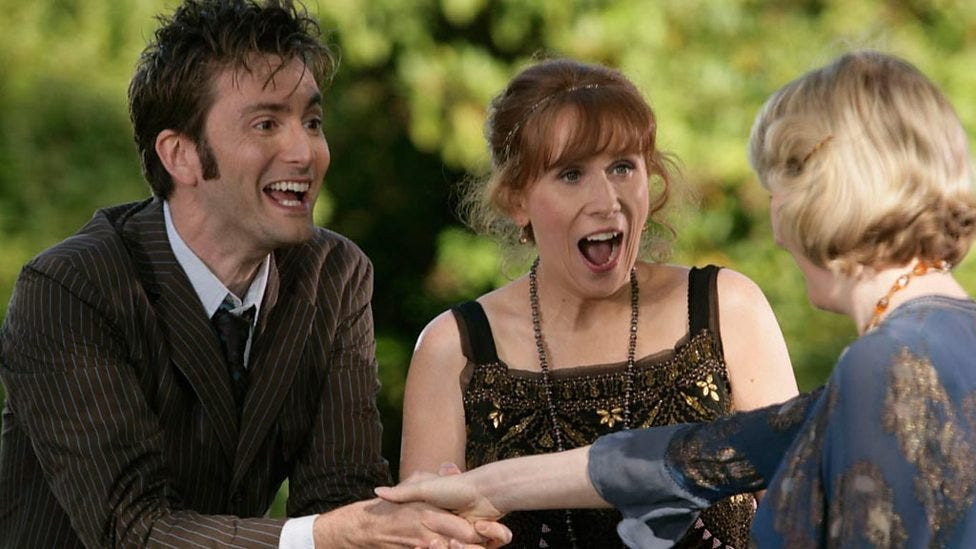 Agatha Christie and the Doctor engage in playful charades, attempting to communicate clues in a humorous scene from Doctor Who's "The Unicorn and the Wasp".
Agatha Christie and the Doctor engage in playful charades, attempting to communicate clues in a humorous scene from Doctor Who's "The Unicorn and the Wasp".
“The Unicorn and the Wasp” stands out as the best “celebrity historical” episode of the RTD era for several reasons. The BBC’s expertise in recreating early 20th-century settings is on full display, creating an immersive and authentic backdrop. The premise of a murder mystery starring Agatha Christie, drawing inspiration from a real-life mystery in her own life, is inherently captivating, especially when executed with such comedic flair. Given series 4’s generally heavier and more somber tone, “The Unicorn and the Wasp” offers a delightful mid-season reprieve, particularly as Tennant and Tate clearly relish the episode’s playful energy. The only minor misstep is the somewhat unconvincing CGI giant bee, a small price to pay for the episode’s overall charm and comedic highlights, such as the hilarious kitchen charades scene.
6. “The Fires of Pompeii” (season four, episode two)
“The Fires of Pompeii” is a remarkable achievement, especially as only the second episode of series 4, demonstrating the show’s peak confidence during RTD’s tenure. The episode’s brilliance lies in its ability to transform a seemingly lighthearted premise – “What if Ancient Pompeii were a British family sitcom?” – into a profoundly morally complex narrative. While initially humorous, the episode evolves into a harrowing exploration of the ethics of time travel, with repercussions that resonate throughout the series (foreshadowing Peter Capaldi’s later casting). “The Fires of Pompeii” also marks a turning point in Catherine Tate’s portrayal of Donna, revealing her dramatic depth and solidifying her as not just a comedic talent but a truly exceptional dramatic actress. This episode sets a high bar for series 4, showcasing its thematic richness and character-driven storytelling.
5. “Turn Left” (season four, episode eleven)
 Rose and Donna stand together in an alternate reality, facing an unknown threat in the dimly lit streets of Doctor Who's "Turn Left".
Rose and Donna stand together in an alternate reality, facing an unknown threat in the dimly lit streets of Doctor Who's "Turn Left".
“Turn Left,” aside from its problematic Orientalist opening, is a powerfully unsettling “what if” scenario highlighting life’s fragility, especially in the absence of the Doctor. The episode’s depiction of a prosperous nation’s rapid descent into fascism feels disturbingly realistic, with Wilf’s haunting line, “It’s happening again,” adding to the chilling atmosphere. The dynamic between Rose and Donna is touching, with Rose assuming a Doctor-like role for this alternate, less confident version of Donna. Like many of series 4’s strongest episodes, “Turn Left” is a showcase for Tate’s acting prowess. Furthermore, it serves as an effective thematic prelude to the grand reunion in the season finale, emphasizing the Doctor’s crucial role in maintaining balance in the universe and the potential consequences of his absence.
4. “The End of Time – Parts One and Two” (2009 Christmas special / 2010 New Year’s special)
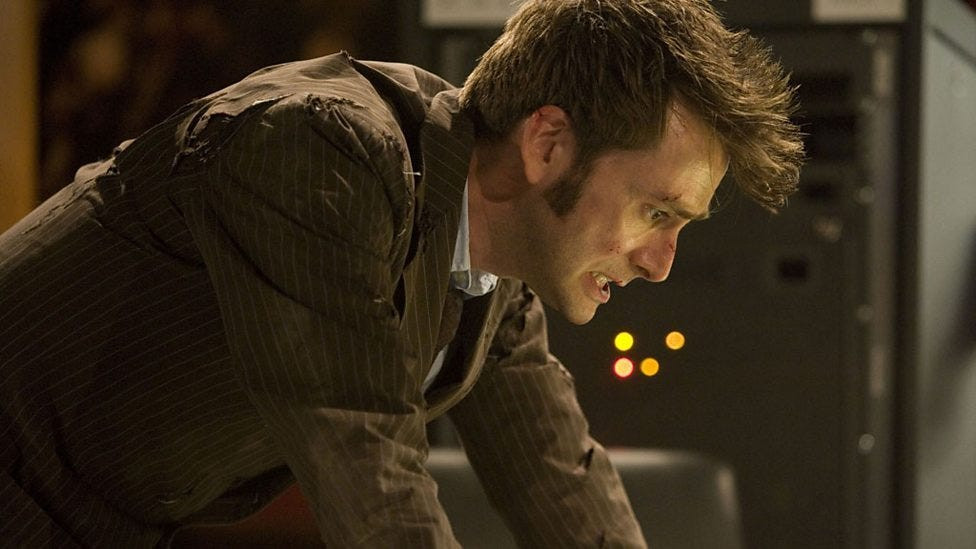 The Tenth Doctor and Wilf stand together, facing an impending crisis with a mix of sadness and determination in Doctor Who's "The End of Time".
The Tenth Doctor and Wilf stand together, facing an impending crisis with a mix of sadness and determination in Doctor Who's "The End of Time".
“The End of Time” masterfully blends a ludicrous plot with profound emotional resonance, a hallmark of RTD season finales and, in this case, a series finale marking the end of an era. Similar to “The Stolen Earth” / “Journey’s End,” the two parts are uneven in quality, but the stronger second part significantly elevates the overall experience. While the Master’s return is largely a misfire, with the exception of John Simm’s dedicated performance, the decision to make Wilf the Doctor’s final companion is a stroke of genius. The Tenth Doctor, often characterized by emotional repression, finds himself opened up by Wilf’s openheartedness, revealing a vulnerability rarely seen before. Tennant delivers a performance of raw emotion, befitting a Doctor whose very creation was rooted in love for Rose Tyler and subsequent loss. “The End of Time” embraces the melodrama inherent in Ten’s character, providing a fittingly emotional and dramatic send-off for his stellar run.
TOP TIER
3. “The Waters of Mars” (2009 fall special)
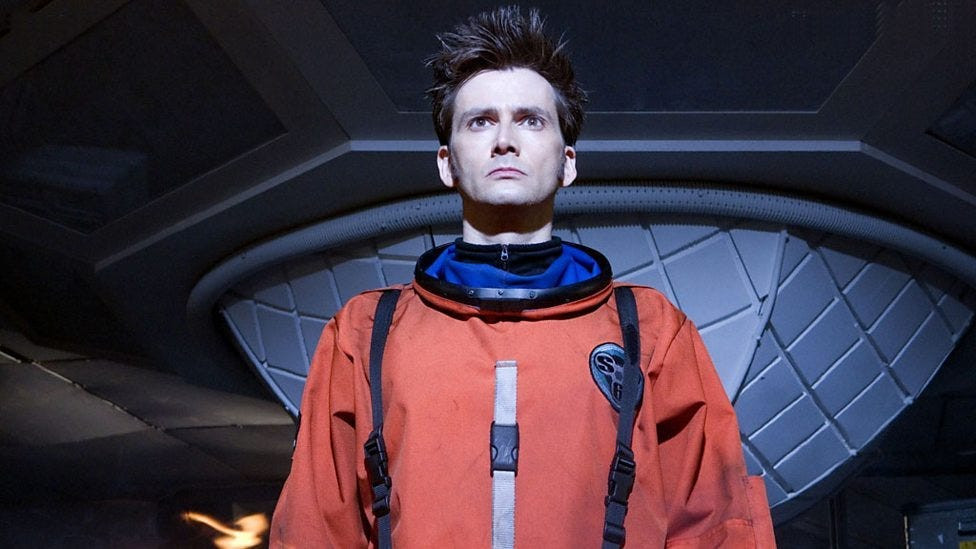 The Doctor, his face etched with grim determination, stands against the backdrop of a Martian base under siege in Doctor Who's "The Waters of Mars".
The Doctor, his face etched with grim determination, stands against the backdrop of a Martian base under siege in Doctor Who's "The Waters of Mars".
NuWho’s success lies in its blend of exciting science fiction and the underlying sense of the Doctor’s precarious emotional state. He is portrayed as an immensely powerful being constantly on the verge of tipping from benevolent hero to vengeful god. “The Waters of Mars” effectively places the audience within the Doctor’s mindset, illustrating the immense burden of his power and responsibility. In a typical episode, viewers would wholeheartedly support the Doctor breaking the rules to save the likeable scientists at Bowie Base One. However, “The Waters of Mars” forces a crucial shift in perspective. It reveals the profound consequences of the Doctor crossing a line that cannot be undone, transforming a seemingly standard base-under-siege narrative into something truly haunting and unforgettable. The episode’s exploration of the Doctor’s hubris and the corrupting nature of absolute power makes it a standout entry in series 4.
2. “Midnight” (season four, episode ten)
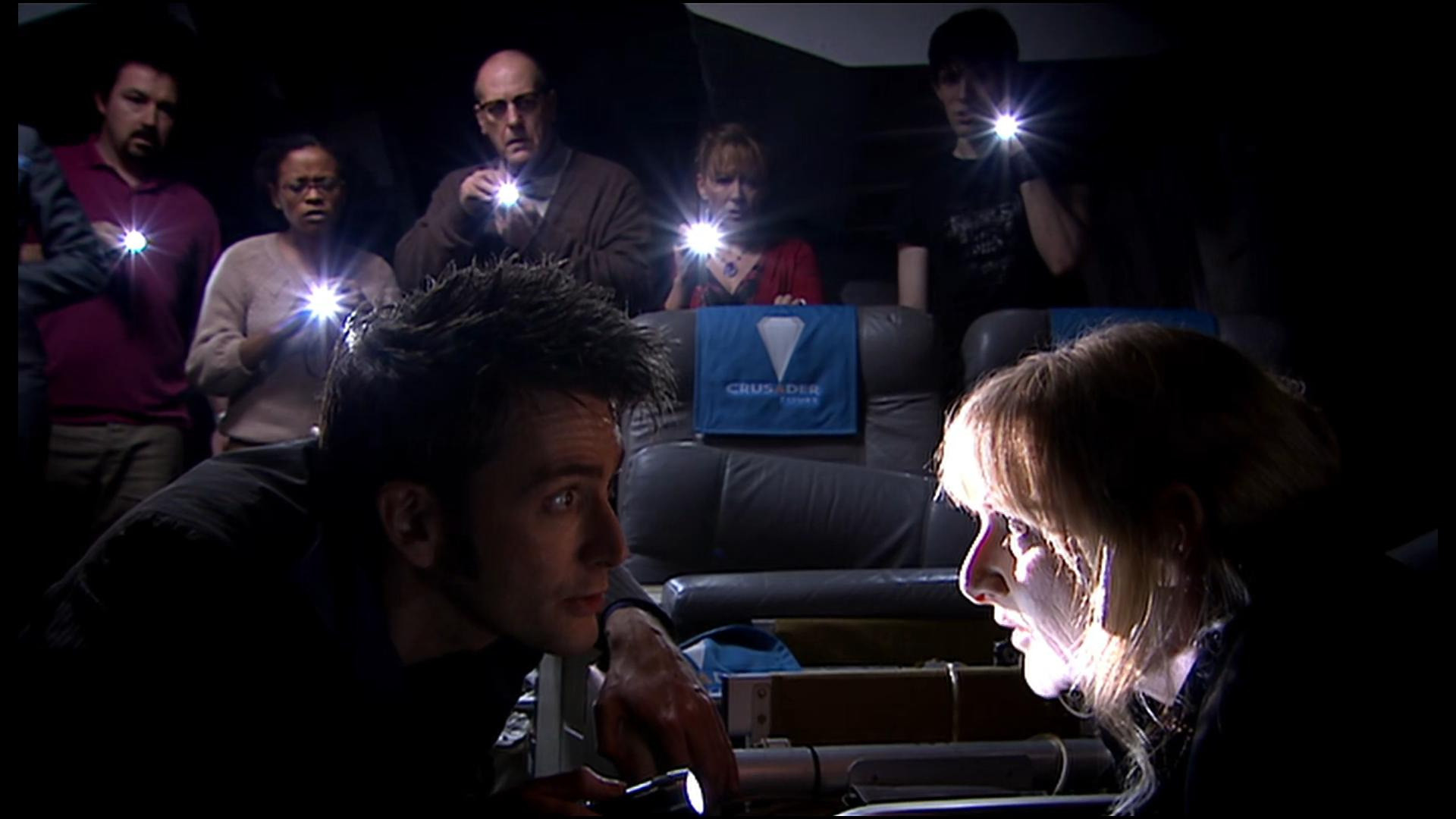 Passengers trapped on a futuristic bus stare in fear and suspicion at each other, illuminated by the vehicle's interior lights in Doctor Who's "Midnight".
Passengers trapped on a futuristic bus stare in fear and suspicion at each other, illuminated by the vehicle's interior lights in Doctor Who's "Midnight".
While RTD’s showrunning strengths often resided in overarching character arcs and intimate character moments, series 4 also showcases some of his strongest individual episodes, including the exceptional “Midnight.” This episode exemplifies how limitations can breed innovation. Practical constraints regarding setting, special effects, and companion involvement are transformed into strengths. RTD crafts a terrifying chamber piece exploring the Doctor’s vulnerability when stripped of his usual support system. “Midnight” starkly contrasts with the series’ typical celebration of the human spirit. It acknowledges the darker side of humanity, revealing how fear and paranoia can transform ordinary people into monsters. The episode’s lack of catharsis and its bleak portrayal of human nature contribute to its lasting and unsettling impact.
1. “Silence in the Library” / “Forest of the Dead” (season four, episodes eight and nine)
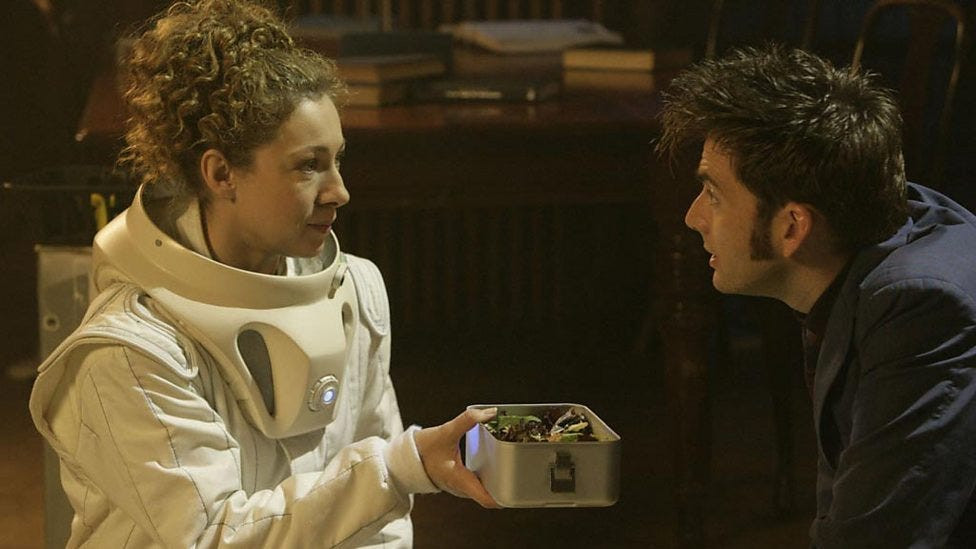 River Song confidently wields a sonic screwdriver in a futuristic library setting, flanked by armed figures in Doctor Who's "Silence in the Library".
River Song confidently wields a sonic screwdriver in a futuristic library setting, flanked by armed figures in Doctor Who's "Silence in the Library".
Despite ongoing fan debates about the best Doctor Who showrunner, a strong argument can be made that the show reached its zenith during the collaboration between Russell T Davies and Steven Moffat. “Silence in the Library” / “Forest of the Dead” serves as a fitting culmination of this creative partnership. This two-parter is a boldly experimental blend of eerie science fiction thriller and tragic romance, showcasing the confidence NuWho had developed by its fourth season. It trusts its audience to navigate Donna’s abstract subplot and the introduction of the Doctor’s complex, out-of-sync love story with Alex Kingston’s Professor River Song. Inventive, adventurous, deeply conceptual, and emotionally resonant, “Silence in the Library” / “Forest of the Dead” stands apart as a unique and unparalleled achievement within the RTD era and within Doctor Who as a whole. Its narrative complexity, compelling characters, and masterful execution solidify its place as the pinnacle of series 4.
Explore more of Girl Culture’s Doctor Who rewatch series with rankings of season one, season two, and season three.
For more Doctor Who content, including reviews of the new specials, follow Girl Culture on Episodic Medium.
